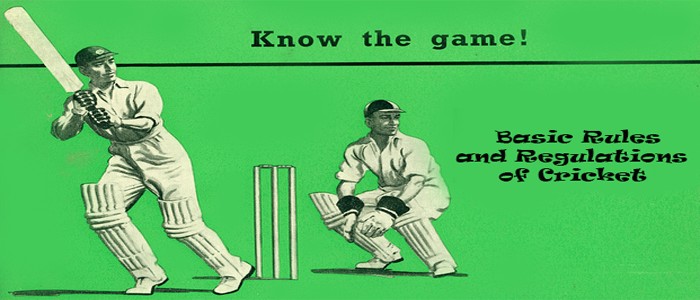
Cricket, originating in 16th-century England, has evolved into a globally cherished outdoor sport. In India, cricket stands out as the most popular game. To engage in cricket, understanding its basic rules and regulations is imperative. While mastering every rule may not be essential for casual play, aspiring cricket professionals must possess a comprehensive knowledge of the game.
What are the Basic Rules and Regulations of Cricket?
A cricket match involves 22 players, with 11 players on each team. Additionally, there is a “twelfth man” in each team who serves as a substitute player in case of injuries. Cricket is played with a bat and ball, requiring a designated playing area.
The Cricket has Three Primary Formats:
T20 Cricket: This format, characterized by limited overs, is immensely popular, with each team facing 20 overs.
ODI Cricket: Another limited-over format, with each team batting for 50 overs. While not as prevalent as T20, ODI cricket enjoys substantial following.
Test Cricket: A traditional format with unlimited overs, spanning up to 4 to 5 days. In this format, each team gets 90 overs per day. Test matches can end in a draw if neither team achieves victory within the allocated time.
Toss and Umpires:
The cricket toss, a pivotal moment in cricket, determines which team bats or bowls first, based on the preference of the winning captain. Umpires, responsible for decision-making during matches, include:

- The first umpire stationed near the stumps.
- The second umpire positioned close to the batsman within the playing field.
- The third umpire, who utilizes technology to assist in decision-making, particularly in cases of ambiguity or challenges from the on-field umpires.
Playing Field and Scoring Runs:
Cricket is played on a circular field with no fixed dimensions, which vary depending on location and venue. Three sets of stumps are positioned at each end. After hitting the ball with the bat, runs are scored by running between the wickets. A run is completed when both batsmen cross the crease line at each end of the pitch.
An over consists of six balls bowled by a designated bowler. Failing to make contact with the ball results in an empty ball, yielding no runs. Boundaries, marked by ropes, award four runs if the ball touches the ground and six runs if it crosses the boundary directly after being hit.
Different Ways to Make Batsman Out:
- Bowled: When the ball hits the stumps without the batsman making contact with the bat.
- Caught: If a fielder catches the ball before it touches the ground after being struck by the batsman.
- Stumped: When the wicketkeeper successfully removes the bails while the batsman is out of their crease.
- Run-Out: If a fielder dislodges the bails with the ball before the batsmen complete a run.
- Hit-Wicket: If the batsman accidentally strikes the stumps with the bat or body while playing a shot.
Conclusion:
Understanding these basic rules and regulations of cricket lays the foundation for enjoying and participating in the sport. Whether you’re a casual enthusiast or aspiring professional, cricket’s rich history and intricate gameplay offer endless opportunities for excitement and competition.
For further insights and updates on cricket, continue exploring our blog.
Cricket is the most popular game in the world.And we know all the rules and regulation in cricket. Bt ur content is to good and well decorated.
Hi my friend! I want to say that this post is awesome, great written and include almost all vital infos.
I’d like to see more posts like this .
Thank you for your positive review.